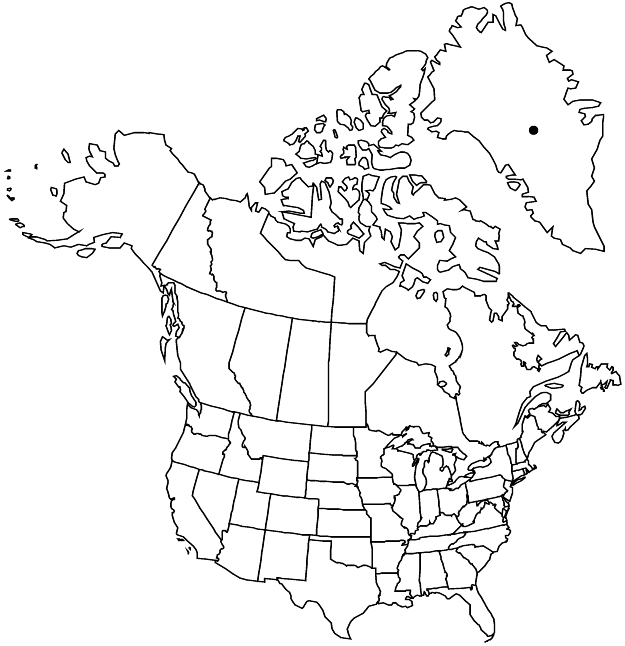Arenaria pseudofrigida
in V. L. Komarov et al., Fl. URSS 6: 537. 1936.
Plants perennial, forming cushions or mats. Taproots filiform to somewhat thickened. Stems 20–40+, procumbent, green, 3–14 cm; internodes terete to angular, 1/2–1+ times as long as leaves, shiny, pubescent in lines or throughout, hairs retrorsely curved. Leaves connate basally, with scarious sheath 0.2–0.3 mm, sessile; blade 1-veined (prominent proximally), oblanceolate to spatulate, 2–6 × 0.8–1.8 mm, succulent, margins thickened, minutely scarious-granular, ± shiny, ciliate in proximal 1/2, apex ± obtuse, sometimes pustulate, glabrous; axillary leaf clusters absent. Inflorescences terminal or axillary, open, leafy, 1–4-flowered cymes in distal leaf-axils. Pedicels erect or nodding in fruit, 2–12 mm, retrorsely pubescent. Flowers: sepals green or distally purple, 3-veined (2 lateral-veins 1/2 times as long as midvein), sometimes keeled, narrowly lanceolate (herbaceous portion narrowly lanceolate), 3–4 mm, to ca. 5 mm in fruit, apex ± acute, not pustulate, glabrous or sparsely stipitate-glandular; petals obovate, 5–8 mm, 12/3–2 times as long as sepals, apex acute to rounded. Capsules tightly enclosed by calyx, narrowly ellipsoid to cylindric, 3–5 mm, ca. equaling sepals. Seeds 15–20, black to reddish-brown, reniform, compressed, 0.8–0.9 mm, shiny, low-tuberculate. 2n = 40.
Phenology: Flowering spring–summer.
Habitat: Open, dry to slightly moist sand or gravel
Elevation: 0-50 m
Distribution

Greenland, Europe
Discussion
We follow B. Jonsell (2001) in treating Arenaria pseudofrigida as one of several arctic species that formerly were included in A. ciliata Linnaeus, a species now considered restricted to alpine regions of central Europe.
Selected References
None.